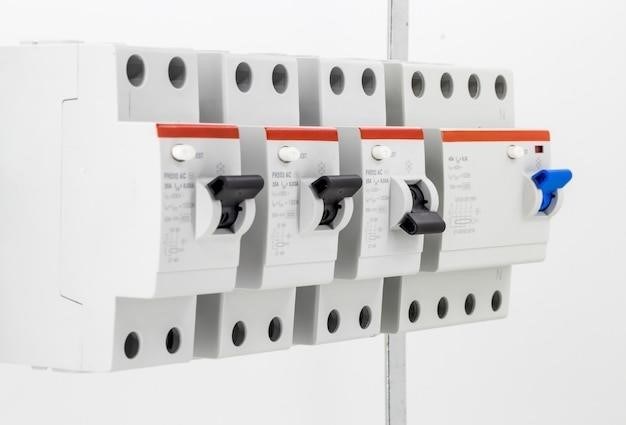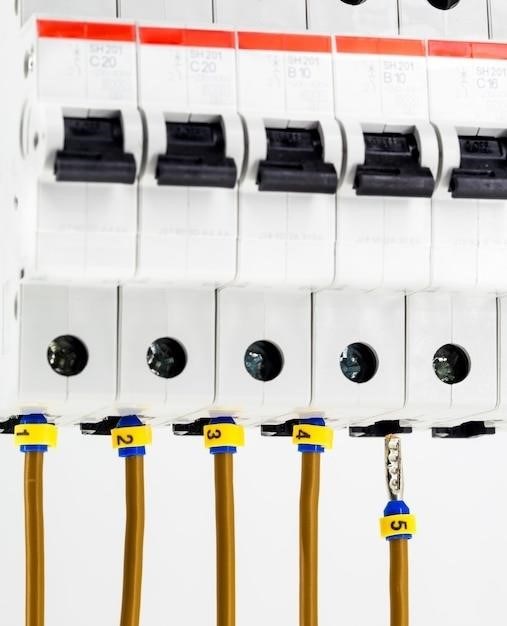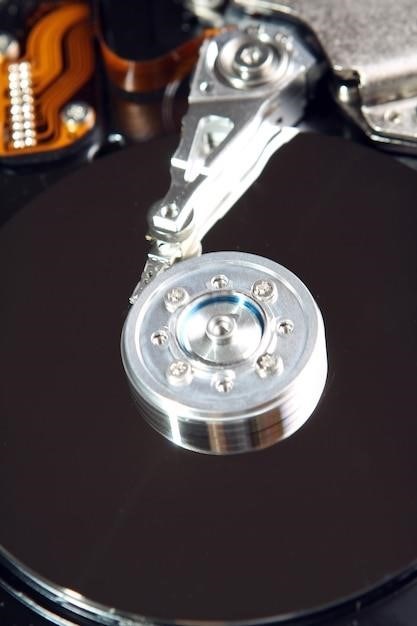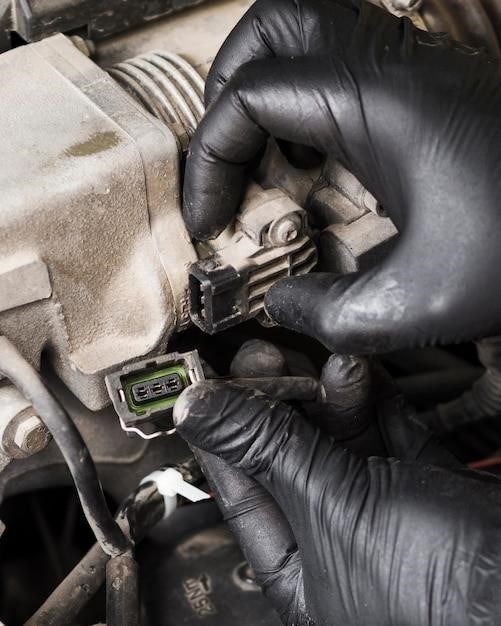This manual provides comprehensive instructions on operating and maintaining your Braun MultiServe Coffee Maker. It covers features‚ brewing options‚ programmable settings‚ cleaning and maintenance‚ troubleshooting‚ and more. You’ll find valuable information for getting the most out of your coffee maker and ensuring its longevity.
Overview
The Braun MultiServe Coffee Maker is a versatile and user-friendly appliance designed to cater to a wide range of coffee preferences. It features multiple brewing options‚ allowing you to customize your coffee strength‚ temperature‚ and flavor to your liking. Whether you prefer a single cup or a full carafe‚ this coffee maker can accommodate your needs. The machine is equipped with a built-in display that provides clear instructions and allows you to easily navigate through the different brewing modes. It also features a programmable timer that lets you set up your coffee brewing in advance‚ ensuring a fresh cup of coffee ready when you wake up.
The Braun MultiServe Coffee Maker comes with several features that enhance the brewing experience. It incorporates ExactBrew technology‚ which automatically calculates the precise temperature‚ speed‚ and time required for optimal extraction. This ensures a consistently delicious cup of coffee‚ every time. The machine also features a charcoal filter that removes impurities from the water‚ resulting in a cleaner and more flavorful brew. Moreover‚ the Braun MultiServe Coffee Maker is equipped with a keep-warm function that maintains the ideal temperature of your coffee for up to 40 minutes‚ allowing you to enjoy your brew at your leisure.
Features
The Braun MultiServe Coffee Maker boasts a range of features designed to elevate your coffee brewing experience. These features include⁚
- ExactBrew Technology⁚ This innovative technology ensures optimal extraction by automatically calculating the precise temperature‚ speed‚ and time for each brew. This results in a consistent‚ delicious cup of coffee‚ every time.
- Multi-Serve Dial⁚ Choose between different cup sizes‚ from a single serving to a full carafe‚ allowing you to brew just the right amount of coffee for any occasion.
- Programmable Timer⁚ Set up your coffee brewing in advance to wake up to a fresh cup of coffee every morning or enjoy a hot beverage at any time.
- Brew Strength Settings⁚ Customize the strength of your coffee to your liking with adjustable brew strength settings. Choose from light‚ gold‚ or bold.
- Iced Coffee Function⁚ Prepare refreshing iced coffee with the built-in iced coffee function. The machine will brew a concentrated coffee that can be poured over ice.
- Hot Water Function⁚ Enjoy a variety of hot beverages‚ such as tea or hot chocolate‚ with the hot water function.
- Keep-Warm Function⁚ Maintain the ideal temperature of your coffee for up to 40 minutes with the keep-warm function‚ ensuring a warm and flavorful cup throughout your morning.
- Charcoal Filter⁚ This filter removes impurities from the water‚ resulting in a cleaner and more flavorful brew.
- Dishwasher-Safe Carafe⁚ The carafe is dishwasher-safe for easy cleaning and maintenance.
Brewing Options
The Braun MultiServe Coffee Maker offers a variety of brewing options to cater to your diverse coffee preferences. Whether you enjoy a strong‚ bold brew or a delicate‚ light cup‚ this machine has you covered. Here are the brewing options available⁚
- Drip Coffee⁚ This is the standard brewing method that produces a classic cup of coffee. You can select different brew sizes and strength levels to customize your cup of coffee.
- Iced Coffee⁚ Prepare refreshing iced coffee by choosing the iced coffee function. This setting brews a concentrated coffee that can be poured over ice‚ creating a perfect summer beverage.
- Hot Water⁚ Brew a variety of hot beverages‚ including tea‚ hot chocolate‚ or even instant soup‚ with the hot water function. This is a versatile feature for those who enjoy a range of hot drinks.
- Gold Brew⁚ This special brew mode delivers a balanced and aromatic cup of coffee that meets the rigorous standards of the Specialty Coffee Association (SCA). It utilizes a specific water volume‚ coffee-to-water ratio‚ and a paper filter to ensure a premium coffee experience.
With these diverse brewing options‚ the Braun MultiServe Coffee Maker offers flexibility and convenience for any coffee enthusiast.
Programmable Settings
The Braun MultiServe Coffee Maker boasts a range of programmable settings‚ allowing you to personalize your coffee brewing experience and customize it to your specific needs and preferences. These settings offer flexibility and convenience‚ making your morning routine a breeze. Here are some of the key programmable features⁚
- Auto-On⁚ Set the coffee maker to automatically start brewing at a specific time‚ ensuring a fresh cup of coffee ready when you wake up. This feature is perfect for those who value consistency and appreciate a cup of coffee right when they need it.
- Brew Strength⁚ Adjust the brew strength to your liking‚ choosing from light‚ gold‚ or bold settings. This allows you to tailor the coffee’s intensity to your taste preferences.
- Keep Warm⁚ The keep warm function maintains the temperature of your coffee for up to 40 minutes‚ ensuring a hot cup even if you’re not ready to enjoy it immediately. This is a convenient feature for those who like to brew a pot in advance.
- Clock⁚ Set the clock to keep track of time and ensure accurate auto-on timing. This function allows you to precisely program the coffee maker to your schedule.
These programmable settings provide you with the control and flexibility to enjoy a perfect cup of coffee every time‚ making your Braun MultiServe Coffee Maker a valuable addition to your kitchen.
Cleaning and Maintenance
Regular cleaning and maintenance are essential for ensuring the longevity and optimal performance of your Braun MultiServe Coffee Maker. By following these simple steps‚ you can keep your coffee maker in top condition and enjoy delicious coffee for years to come.
- Daily Cleaning⁚ After each use‚ empty the carafe and rinse it thoroughly with warm‚ soapy water. Wipe down the exterior of the coffee maker with a damp cloth. The removable water tank can be rinsed and refilled with fresh water for the next brewing session.
- Weekly Cleaning⁚ Once a week‚ remove and clean the permanent filter basket with warm‚ soapy water. Ensure that the filter is completely dry before reinserting it into the coffee maker.
- Monthly Descaling⁚ To prevent mineral buildup and ensure optimal water flow‚ descale your coffee maker at least once a month. Follow the descaling instructions provided in the manual. This process involves using a descaling solution specifically designed for coffee makers.
- Filter Replacement⁚ Replace the charcoal water filter every two months to maintain optimal water quality and taste.
By following these simple cleaning and maintenance tips‚ you can ensure that your Braun MultiServe Coffee Maker continues to deliver a delicious cup of coffee every time.
Troubleshooting
While the Braun MultiServe Coffee Maker is designed for reliability‚ occasional issues may arise. This section provides solutions for common problems you might encounter; If the issue persists‚ consult the Braun MultiServe KF9050 manual or contact Braun customer support for further assistance.
- No Power⁚ Ensure the coffee maker is plugged in and the power outlet is functioning. Check the power cord for any damage or loose connections.
- Coffee Maker Not Brewing⁚ Verify that there is water in the water reservoir and the coffee maker is not in standby mode. Ensure the lever is positioned in the Coffee position and the brew mode is selected.
- Weak Coffee⁚ Adjust the brew strength setting to a higher level‚ such as “Bold.” Ensure the coffee grounds are fresh and properly measured.
- Water Leaking⁚ Ensure the water reservoir is properly closed and the coffee maker is level. Check for any blockages or debris in the water filter or brewing chamber.
- Error Codes⁚ Refer to the manual for a detailed explanation of error codes displayed on the coffee maker. These codes indicate specific issues that need to be addressed.
By following these troubleshooting tips‚ you can resolve common issues and enjoy uninterrupted coffee brewing with your Braun MultiServe Coffee Maker.
FAQs

Here are some frequently asked questions about the Braun MultiServe KF9050 coffee maker‚ providing answers to common inquiries and concerns. If you have a question not addressed here‚ consult the user manual or contact Braun customer support.
- How often should I descale my coffee maker? The frequency of descaling depends on the water hardness. For hard water‚ descaling once a month is recommended‚ while for soft water‚ descaling once a quarter is sufficient.
- What type of descaling agent should I use? Use a liquid descaling agent specifically designed for coffee machines. Follow the instructions provided on the descaling agent’s packaging.
- What is the difference between “Light‚” “Gold‚” and “Bold” brew modes? “Light” mode produces a milder brew‚ “Gold” mode provides a balanced taste meeting SCA standards‚ and “Bold” mode delivers a stronger‚ more intense flavor.
- How do I adjust the brew strength? Select the desired brew mode using the corresponding button on the coffee maker’s control panel.
- Can I make espresso with my Braun MultiServe KF9050? The Braun MultiServe KF9050 is designed for drip coffee brewing‚ not espresso.
This FAQ section provides a starting point for answering your questions. If you require further clarification or have additional inquiries‚ consult the Braun MultiServe KF9050 manual or contact Braun customer support.
User Manual Download
Accessing the Braun MultiServe KF9050 user manual is essential for understanding its features‚ operating instructions‚ and troubleshooting tips. Fortunately‚ there are several ways to obtain the manual‚ ensuring you have the necessary information at your fingertips.
- Braun Website⁚ Visit the official Braun website and navigate to their product support section. You can search for the specific model number‚ “Braun MultiServe KF9050‚” and download the manual in PDF format. This is a reliable source for obtaining the latest version of the manual.
- Online Manuals Databases⁚ Numerous online databases‚ such as ManualsLib or Manua.ls‚ offer a vast collection of user manuals for various products‚ including Braun appliances. These platforms allow you to search for the specific model and download the manual in your preferred format.
- Retailer Websites⁚ If you purchased the Braun MultiServe KF9050 from a retailer like Amazon or Best Buy‚ their websites often have a “downloads” or “support” section where you can access user manuals for products they sell.
By utilizing these resources‚ you can easily download the Braun MultiServe KF9050 user manual‚ ensuring a smooth and enjoyable experience with your new coffee maker.
Product Specifications
The Braun MultiServe KF9050 coffee maker is designed with a focus on versatility and functionality‚ offering a range of features to cater to diverse coffee preferences. Here are some key product specifications that highlight its capabilities⁚
- Brewing Options⁚ The KF9050 boasts multiple brewing options‚ allowing you to customize your coffee experience. It offers a variety of cup sizes‚ from single servings to full carafes‚ ensuring you can brew the perfect amount for any occasion. You can also select from different brew strengths‚ including Light‚ Gold (SCA Certified)‚ and Bold‚ to suit your taste.
- Programmable Settings⁚ Enjoy the convenience of programmable settings for a personalized coffee routine. The KF9050 allows you to set a timer for automatic brewing‚ ensuring a fresh cup of coffee ready when you wake up or return home. Additionally‚ you can adjust the keep-warm function to maintain the ideal temperature for your coffee.
- Additional Features⁚ The KF9050 comes equipped with a charcoal water filter to enhance the purity and taste of your coffee. It also features a removable water tank and a dishwasher-safe carafe for easy cleaning and maintenance. The sleek design and stainless steel accents add a touch of elegance to your kitchen.
These product specifications highlight the Braun MultiServe KF9050’s commitment to delivering a high-quality and convenient coffee brewing experience.
Manual Specifications
The Braun MultiServe KF9050 manual is a comprehensive guide that provides detailed information on operating and maintaining your coffee maker. It’s designed to be user-friendly and accessible‚ ensuring you can easily navigate its contents and find the information you need. Here are some key manual specifications that highlight its features⁚

- Language Availability⁚ The manual is available in multiple languages‚ catering to a global audience. This ensures that users worldwide can understand and utilize the information provided.
- Content Coverage⁚ The manual covers a wide range of topics‚ including product overview‚ features‚ brewing options‚ programmable settings‚ cleaning and maintenance‚ troubleshooting‚ and FAQs. This comprehensive approach provides users with a complete guide to their coffee maker.
- Format⁚ The Braun MultiServe KF9050 manual is available in both physical and digital formats. The physical manual is typically a stapled booklet‚ while the digital version can be accessed online or downloaded as a PDF file. This flexibility allows users to choose the format that best suits their needs.
- Visual Aids⁚ The manual incorporates clear and concise illustrations and diagrams to enhance understanding. These visual aids supplement the written instructions‚ making it easier for users to grasp the concepts and procedures.
These manual specifications contribute to a user-friendly and informative experience‚ ensuring that users can confidently operate and maintain their Braun MultiServe KF9050 coffee maker.












